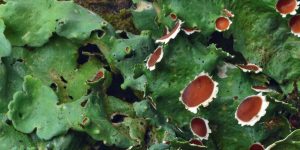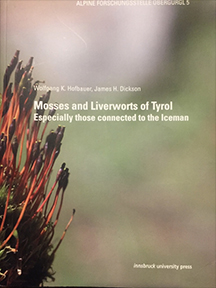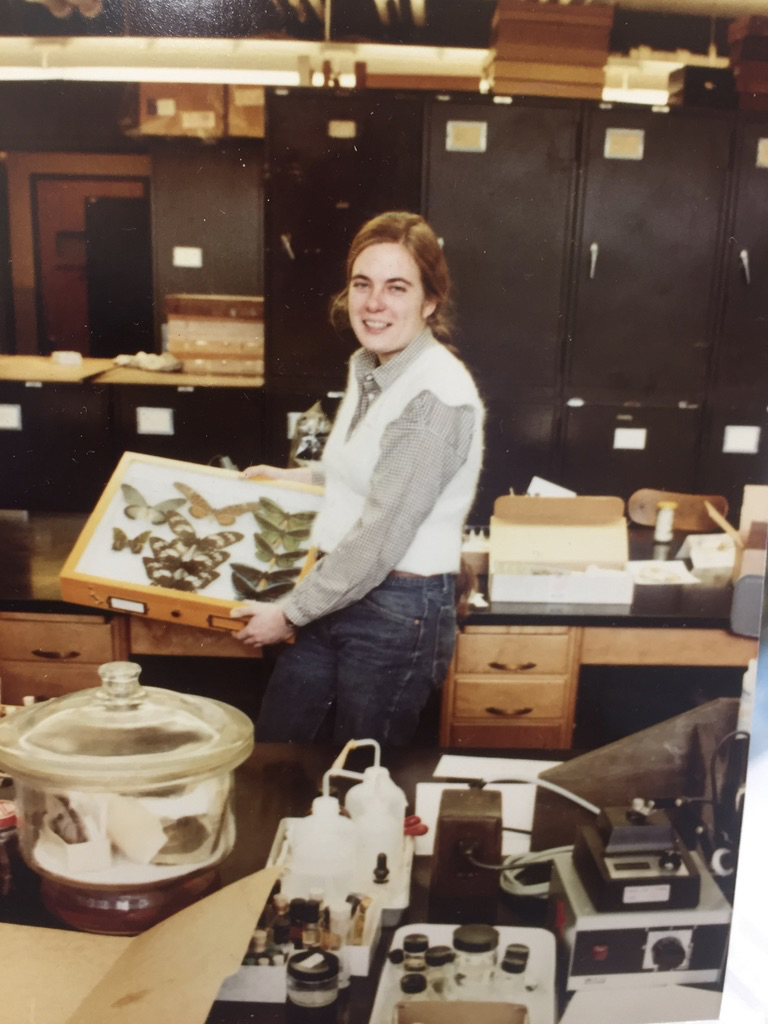Sanborn, A.F. The cicadas (Hemiptera: Cicadidae) of Peru including the description of twenty-four new species, three new synonymies and thirty-seven new records. Zootaxa 4785(1): 1-129. (Monograph ISBN 978-1-77670-945-8) https://doi.org/10.11646/zootaxa.4785.1.1
Abstract reads: The known cicada fauna of Peru is identified. Fidicinoides ptychodiropeda n. sp., Guyalna capnopteryx n. sp., G. chrysinothrix n. sp., G. dyticamazona n. sp., G. spilonotophora n. sp., Carineta acommosis n. sp., C. bitorquata n. sp., C. castaneopercula n. sp., C. dicrophryxothrix n. sp., C. digitata n. sp., C. nigrafissura n. sp., C. quadrofastigiata n. sp., C. rumipataensis n. sp., C. tingomariaensis n. sp., C. tricuspis n. sp., Herrera castanetorquata n. sp., H. cephalodigramma n. sp., H. chanchamayoensis n. sp., H. dentata n. sp., H. moyabambaensis n. sp., H. nigropercula n. sp., H. polygramma n. sp., H. quadrimacula n. sp., and H. viriventralis n. sp. are described as new. Three taxa, Cicada (Prunasis) pulcherrima var. a Stål, 1862a, C. (P.) pulcherrima var. b Stål, 1862a, and C. (P.) pulcherrima var. c Stål, 1862a are shown to be unavailable as well as junior synonyms of Prunasis pulcherrima (Stål, 1854) which is shown to be the correct name for the taxon over the preoccupied Cicada viridula Walker, 1850. The first records of Durangona tigrina Distant, 1911, Fidicina obscura Boulard & Martinelli, 1996, F. robini Boulard & Martinelli, 1996, Fidicinoides descampsi Boulard & Martinelli, 1996, F. determinata (Walker, 1858a), F. duckensis Boulard & Martinelli, 1996, F. pseudethelae Boulard & Martinelli, 1996, Proarna bergi (Distant, 1892a), P. dactyliophora Berg, 1879, P. strigicollis Jacobi, 1907, Guyalna aurora Ruschel, 2017, G. bicolor (Olivier, 1790), G. chlorogena (Walker, 1850), G. distanti (Goding, 1925), G. glauca (Goding, 1925), Majeorona aper (Walker, 1850), M. ecuatoriana Goding, 1925, M. truncata Goding, 1925, Orialella aerizulae Boulard, 1986b, Calyria cuna (Walker, 1850), Prunasis pulcherrima (Stål, 1854), Taphura boulardi Sanborn, 2011a, Carineta boulardi Champanhet, 1999, Carineta cearana Distant, 1906b, C. congrua Walker, 1858b, C. dolosa Boulard, 1986a, C. doxiptera Walker, 1858a, C. ecuatoriana Goding, 1925, C. gemella Boulard, 1986a, C. hamata Sanborn, 2019b, C. matura Distant, 1892b, C. pilifera Walker, 1858a, C. pilosa Walker, 1850, C. ventrilloni Boulard, 1986a, Herrera concolor Sanborn, 2019b, H. melanomesocranon Sanborn, 2019b, and H. phyllodes Sanborn, 2019b are provided. The records for Durangona tigrina Distant, 1911 are the first records of the genus Durangona Distant, 1911 and tribe Durangonini Moulds and Marshall, 2018 and the records for Prunasis pulcherrima (Stål, 1854) are the first for the genus Prunasis Stål, 1862a in Peru. Previous records of Zammara tympanum (Fabricius, 1803), Orialella boliviana (Distant, 1904b), Guyalna brisa (Walker, 1850) and Selymbria stigmatica (Germar, 1834) are considered to be misidentifications of Z. hertha Schmidt, 1919, O. aerizulae, G. dyticamazona n. sp. and S. madredediosensis Sanborn, 2019b, respectively, so that Z. tympanum, O. boliviana, G. brisa and S. stigmatica are removed from the cicada fauna of Peru. The Peruvian records of Dorisiana semilata (Walker, 1850) are shown to be due to an incorrect synonymy of D. metcalfi Sanborn & Heath, 2014 and the species is removed from the faunal list as well. Additional new records of Fidicinoides poulaini Boulard & Martinelli, 1996 are provided for Brazil and Guyalna chlorogena (Walker, 1850) for French Guiana to expand the known distribution of these species. The currently known Peruvian cicada fauna is comprised of 114 described species from 23 genera, eight tribes and three subfamilies with a 115% increase in the known cicada fauna provided here.
 Meghan Moriarty joined the
Meghan Moriarty joined the  We are delighted to welcome Dr. Katrina Menard to the BRC as the new Invertebrate Collections Manager. Katrina earned her Ph.D. in Entomology at Texas A & M University in 2011. Shortly after graduating, she assumed the role of collections manager of Recent Invertebrates at the Sam Noble Museum of Natural History in Oklahoma. Katrina is a broadly trained entomologist with a special interest in plant bugs of the family Miridae. We are excited to have someone with her skills and experience join our team
We are delighted to welcome Dr. Katrina Menard to the BRC as the new Invertebrate Collections Manager. Katrina earned her Ph.D. in Entomology at Texas A & M University in 2011. Shortly after graduating, she assumed the role of collections manager of Recent Invertebrates at the Sam Noble Museum of Natural History in Oklahoma. Katrina is a broadly trained entomologist with a special interest in plant bugs of the family Miridae. We are excited to have someone with her skills and experience join our team
 With the latest addition of “Hofbauer, Wolfgang K. and James H. Dickson. 2020. Mosses and Liverworts of Tyrol. Especially those connected to the Iceman” the
With the latest addition of “Hofbauer, Wolfgang K. and James H. Dickson. 2020. Mosses and Liverworts of Tyrol. Especially those connected to the Iceman” the  Mr. Clinton Morse, the senior manager of the Plant Biodiversity Conservatory and Research Center contributed an article on “Cordless Electric Tools for the Greenhouse” to the latest issue of
Mr. Clinton Morse, the senior manager of the Plant Biodiversity Conservatory and Research Center contributed an article on “Cordless Electric Tools for the Greenhouse” to the latest issue of  Dr. Jane O’Donnell officially retired from her position as Invertebrate Collection Manager. Jane had been at UCONN for 39 years, completing her undergraduate and graduate degree before serving as collection manager. Jane distinguished herself by her unconditional commitment to the collection, providing numerous opportunities for undergraduates to acquire experiences in natural history collection management, leading a course on the role and significance of natural history collections and devoting her career to the preservation, accessibility and growth of the invertebrate collection. Jane has been an inspiration to all who had the chance to work with her. She will now focus more of her time to completing some of her outstanding projects on the systematics of the true bugs (i.e., Heteroptera). Thank you for your many years of exemplary service and best wishes, from everyone in the Biodiversity Research Collections.
Dr. Jane O’Donnell officially retired from her position as Invertebrate Collection Manager. Jane had been at UCONN for 39 years, completing her undergraduate and graduate degree before serving as collection manager. Jane distinguished herself by her unconditional commitment to the collection, providing numerous opportunities for undergraduates to acquire experiences in natural history collection management, leading a course on the role and significance of natural history collections and devoting her career to the preservation, accessibility and growth of the invertebrate collection. Jane has been an inspiration to all who had the chance to work with her. She will now focus more of her time to completing some of her outstanding projects on the systematics of the true bugs (i.e., Heteroptera). Thank you for your many years of exemplary service and best wishes, from everyone in the Biodiversity Research Collections.